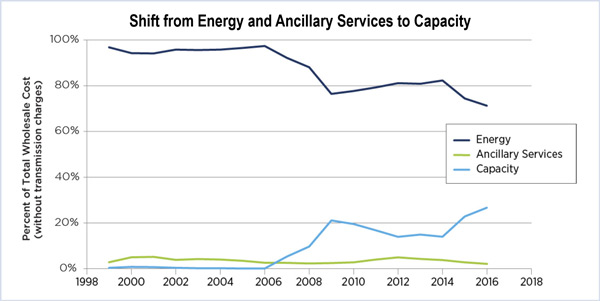By Rory D. Sweeney
While PJM and its Independent Market Monitor agree that its markets “work” and are competitive, they disagree on what might make them better.
Those differences were highlighted last week when the Monitor released its first quarterly State of the Market report of the year, followed by the RTO’s response to the Monitor’s 2016 report.
The quarterly update revised just two of the Monitor’s existing recommendations for Incremental Auctions. It added a proposal that PJM should hold only one IA annually, three months prior to the start of the delivery year.
It also recommended that the RTO release cleared capacity at those auctions “only in cases where the combination of quantities released and associated prices would increase the welfare of capacity market resource owners and load” with consideration for both capacity and energy market benefits.
In response to the Monitor’s original recommendations, PJM agreed “that the structure and format of Incremental Auctions should be reviewed” and pointed to the recently created Incremental Auction Senior Task Force to address those concerns.
But the RTO disagreed with many of the Monitor’s other recommendations, including how to handle demand response resources and uplift. PJM said the EPSA v. FERC Supreme Court case ruled that DR should receive full LMP payments and — despite the Monitor’s recommendation that “any generation component of their retail rate” be subtracted from DR payments — doesn’t plan to challenge the ruling.
On uplift, PJM said many of the Monitor’s recommendations were considered by the Energy Market Uplift Senior Task Force, which debated the issue for several years before coming to a consensus on a three-phase plan that was endorsed by members — despite ongoing controversy — during April’s Markets and Reliability Committee meeting. PJM is waiting to submit the plan for FERC approval until the commission has a quorum. (See PJM MRC OKs Uplift Solution over Financial Marketers’ Opposition.)
The largest rift between the Monitor and PJM seems to be whether to allow inflexible units to set LMPs. The Monitor opposes the idea, but PJM argued that “allowing inflexible units to set [LMP] would create an outcome in which [LMP] increases more consistently as load increases.”
PJM believes that — along with the addition of a load-following product — allowing inflexible resources to set LMP would reduce uplift, increase system flexibility and promote enhanced gas-electric coordination.
The changes would also benefit what appears to be PJM’s goal of increasing its energy market prices. In its response, the RTO raised concerns about steadily declining prices thanks to cheap, efficient gas units, increasing renewables and stagnant demand growth partially attributable to energy-efficiency improvements.
Recent low prices, combined with hesitancy to invest in the market and public-policy actions in order to address socioeconomic concerns, “test market price formation and long-term viability,” PJM said.
The effects of units not properly incentivized to follow PJM’s dispatch signals, along with an increasing role for the capacity market in resource entry/exit decisions, “accumulate over the longer term to create unintended bias toward low capital-cost resources with high operating costs,” it said.
Low prices have created a recent rush to subsidize unprofitable generation, such as through the creation of zero-emission credits in New York and Illinois. PJM and the Monitor agree that’s ill-advised.
“Although some state subsidies may intend to address the financial problems that some generators face due to declining energy prices, paradoxically, the subsidies actually may make the problem worse because they further depress market prices, causing needs for more subsidies,” PJM said. “As the 2016 State of the Market Report indicates, however, subsidies are contagious and could spread. If subsidies do become more widespread, they could deter new entry while the suppressed price could artificially raise demand, causing supply shortages in the long term.”
Instead, PJM suggests pricing carbon at the state level if necessary, or implementing its “capacity market repricing” proposal that would allow subsidized resources to be counted toward PJM’s installed reserve margin without impacting the capacity clearing price.
While PJM and the Monitor remain at odds on the role of inflexible units in the market, the RTO is working toward some of the Monitor’s recommendations. The RTO will bring a problem statement to the Market Implementation Committee or the MRC to create comparable flexibility of the operating parameters in the cost-based offer and price-based parameter limited schedule (PLS) with the non-PLS price-based offer. It will also address the Monitor’s recommendation that market participants have at least one cost schedule with the same fuel type and parameters as that of their offered price schedule.






